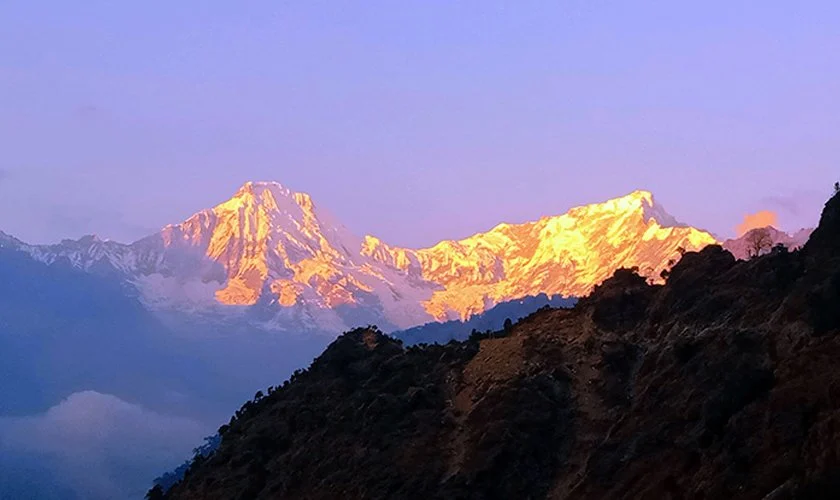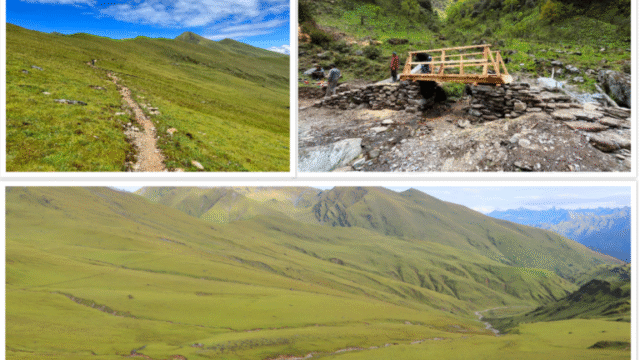Every year, tragic cases of tourists dying from altitude sickness, also known as “Lek Lagne,” are reported, particularly during the peak trekking seasons of Ashwin-Mangsir (September-November) and Chaitra-Jestha (March-May). Last year alone, 21 tourists lost their lives due to altitude sickness in the Annapurna region, including six Nepali nationals, 11 Indian tourists, two Malaysians, one Ukrainian, and one British citizen. This growing trend of fatalities has raised alarms about the risks associated with high-altitude trekking.
Most Affected Areas and Tourists
According to the Annapurna Conservation Area Project (ACAP), the majority of altitude sickness-related incidents occur in the Mustang district, particularly in the Muktinath area. Indian religious tourists visiting Muktinath are among the most affected, as they often travel to high altitudes in a short span, increasing the likelihood of altitude sickness. Tourists arriving from low-altitude areas, such as Kathmandu and the Terai region, tend to suffer more due to the sudden elevation change.
Muktinath, located at 3,710 meters, and Tilicho Lake, situated at 4,919 meters, are among the most common destinations where tourists face altitude sickness. Many Indian tourists, who arrive by vehicle, experience altitude sickness soon after reaching Muktinath because their bodies do not have time to acclimatize to the high altitude.
Preventive Measures and Safety Tips
To avoid altitude sickness, experts recommend travelers take regular breaks while ascending. Sudden elevation changes, such as traveling from low-altitude areas directly to Muktinath or Tilicho, can trigger altitude sickness. It is especially crucial to avoid rushing the ascent and to allow time for acclimatization.
Trekking in the Annapurna region, including Muktinath and Tilicho Lake, should ideally be done gradually, with overnight rests at lower altitudes to allow the body to adjust. For example, it is advisable to spend a day in Jomsom before proceeding to Muktinath or rest at the base camp before attempting the higher-altitude trek to Tilicho Lake.
When trekking, it is recommended not to ascend more than 500 meters per day and to ensure proper physical and mental health before setting out. Solo trekking is discouraged, and tourists should always hire a guide or travel with a group to ensure safety in the event of an emergency.
Understanding the Symptoms and Treatment
Altitude sickness, or “Hypobaric Hypoxia” in medical terms, occurs due to insufficient oxygen at higher altitudes. This condition can affect people of any age. Early symptoms include headaches, nausea, dizziness, and vomiting. If symptoms of altitude sickness appear, it is essential to stop the ascent immediately and descend to a lower altitude.
The primary treatment for altitude sickness involves taking oxygen supplements and medications prescribed by a doctor. In severe cases, when the illness progresses to dangerous levels, such as fluid accumulation in the lungs (pulmonary edema) or brain swelling (cerebral edema), the only effective treatment is immediate descent and medical evacuation. If left untreated, these conditions can lead to death.
Stages of Altitude Sickness
There are three stages of altitude sickness:
- Mild Symptoms: Headaches, nausea, dizziness, and weakness.
- Moderate Symptoms: Fluid accumulation in the lungs, respiratory issues, and difficulty breathing.
- Severe Symptoms: Brain swelling and loss of consciousness, which can be fatal if not treated promptly.
Helicopter evacuations have been used to save lives in extreme cases, with patients being airlifted to hospitals for emergency treatment.
Recent Efforts for Immediate Care
In response to the increasing incidents of altitude sickness, an emergency treatment and rescue center has been set up in Muktinath to provide initial care and evacuation for affected tourists. This move aims to address the rising concerns about the safety of tourists in high-altitude regions.
With a rise in altitude sickness-related deaths, authorities urge travelers to take necessary precautions, including proper acclimatization, maintaining good health, and being aware of the risks when trekking in Nepal’s mountainous regions.






